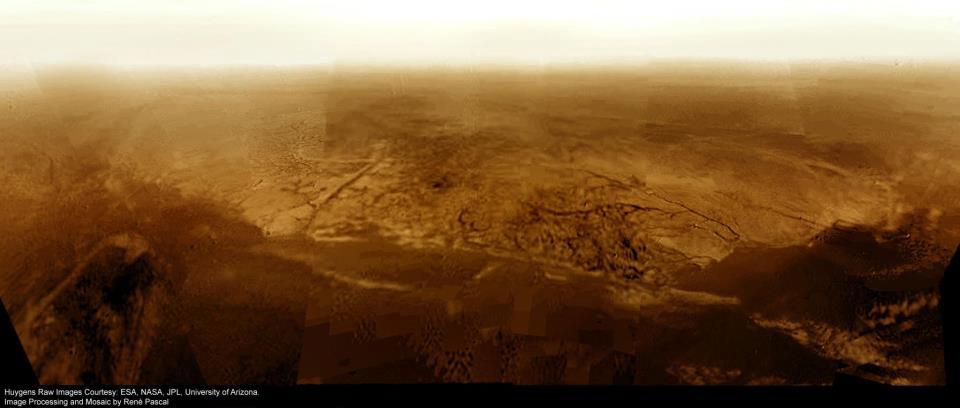

By far, one of the most interesting moons in our solar system (and certainly my favorite) is Titan, the largest moon of the beautiful ringed planet Saturn. For starters, it is probably the most Earth-like body in our solar system, despite its designation as a moon. It has a thick atmosphere, oceans and rivers of methane, mountains, valleys, and perhaps even some microbial life. Its mysteries are abounding.
Therefore, when the Cassini-Huygens probe was sent to explore the Saturnian system, one of its primary missions was probing the toxic atmosphere of this bizarre moon. Huygens wound up separating from the Cassini orbiter on Christmas day of 2004 before ultimately reaching Titan over two weeks later. The orbiter took over and made its descent through the atmosphere. During its 2.5-hour descent, it collected data to be sent back to Cassini and then on to Earth. ESA, who was in charge of constructing the probe to withstand the elements of the icy moon, took into account the likelihood that the lander may indeed touch down in one of the many hydrocarbon lakes and oceans on Titan’s surface.
This time-lapse video was stitched together using images Huygens took during its descent, starting from the transit the Earth and the moon made in front of the sun from the probes vantage point. These images mark an extremely extraordinary accomplishment. To date, this is the first (and so far the only) time any spacecraft has landed on a celestial body in the outer portion of our solar system. Also, these are the first images ever taken of this extraordinary alien world, as its thick atmosphere, which is composed primarily of nitrogen and methane, obscures its surface from being seen at optical wavelengths.
Related ‘From Quarks to Quasars’ articles:
- “A Day on Titan“. Jolene Creighton, FQTQ. 6 November 2013
- “Titan’s Nile River“. Jaime Trosper, FQTQ. 1 January 2013.
- “ECP’s TALISE Proposal“. Jaime Trosper, FQTQ. 1 October 2012.